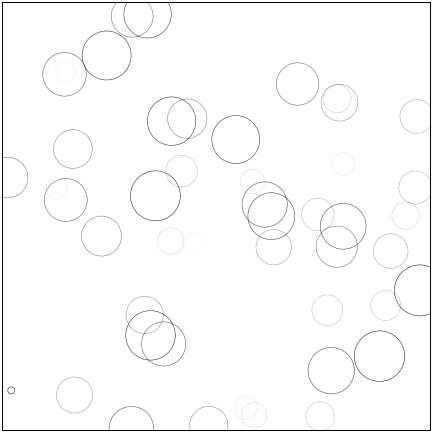reading-notes
Data Visualization
SOURCES
ARTICLES
NOTES
- matplotlib has probably the worst name of any package Ive ever seen and that includes mongo. Seriously who came up with this?
- ajksfjh is the most used 2d graphics package on python
- This mixes 2 of my least favorite things, advanced math and python GREAT!
- I was unaware you could do animations with python. There is an example of a “rain drop” using math to generate the circles. Why does something so cool looking have to be made in the worst way possible?

- unfortunately the code behind this is very difficult to understand. This is pulled directly from the github:
# Number of ring
n = 50
size_min = 50
size_max = 50*50
# Ring position
P = np.random.uniform(0,1,(n,2))
# Ring colors
C = np.ones((n,4)) * (0,0,0,1)
# Alpha color channel goes from 0 (transparent) to 1 (opaque)
C[:,3] = np.linspace(0,1,n)
# Ring sizes
S = np.linspace(size_min, size_max, n)
# Scatter plot
scat = ax.scatter(P[:,0], P[:,1], s=S, lw = 0.5,
edgecolors = C, facecolors='None')
# Ensure limits are [0,1] and remove ticks
ax.set_xlim(0,1), ax.set_xticks([])
ax.set_ylim(0,1), ax.set_yticks([])
and
def update(frame):
global P, C, S
# Every ring is made more transparent
C[:,3] = np.maximum(0, C[:,3] - 1.0/n)
# Each ring is made larger
S += (size_max - size_min) / n
# Reset ring specific ring (relative to frame number)
i = frame % 50
P[i] = np.random.uniform(0,1,2)
S[i] = size_min
C[i,3] = 1
# Update scatter object
scat.set_edgecolors(C)
scat.set_sizes(S)
scat.set_offsets(P)
# Return the modified object
return scat,
This code is nice because while I dont know what its doing just by looking at the code itself, it is commented on very well and makes understanding it very eazy.
- this is clearly a powerful tooll for people involved in data science or science in general. The ability to have such control over the data and to be able to visualize it seems invaluable.